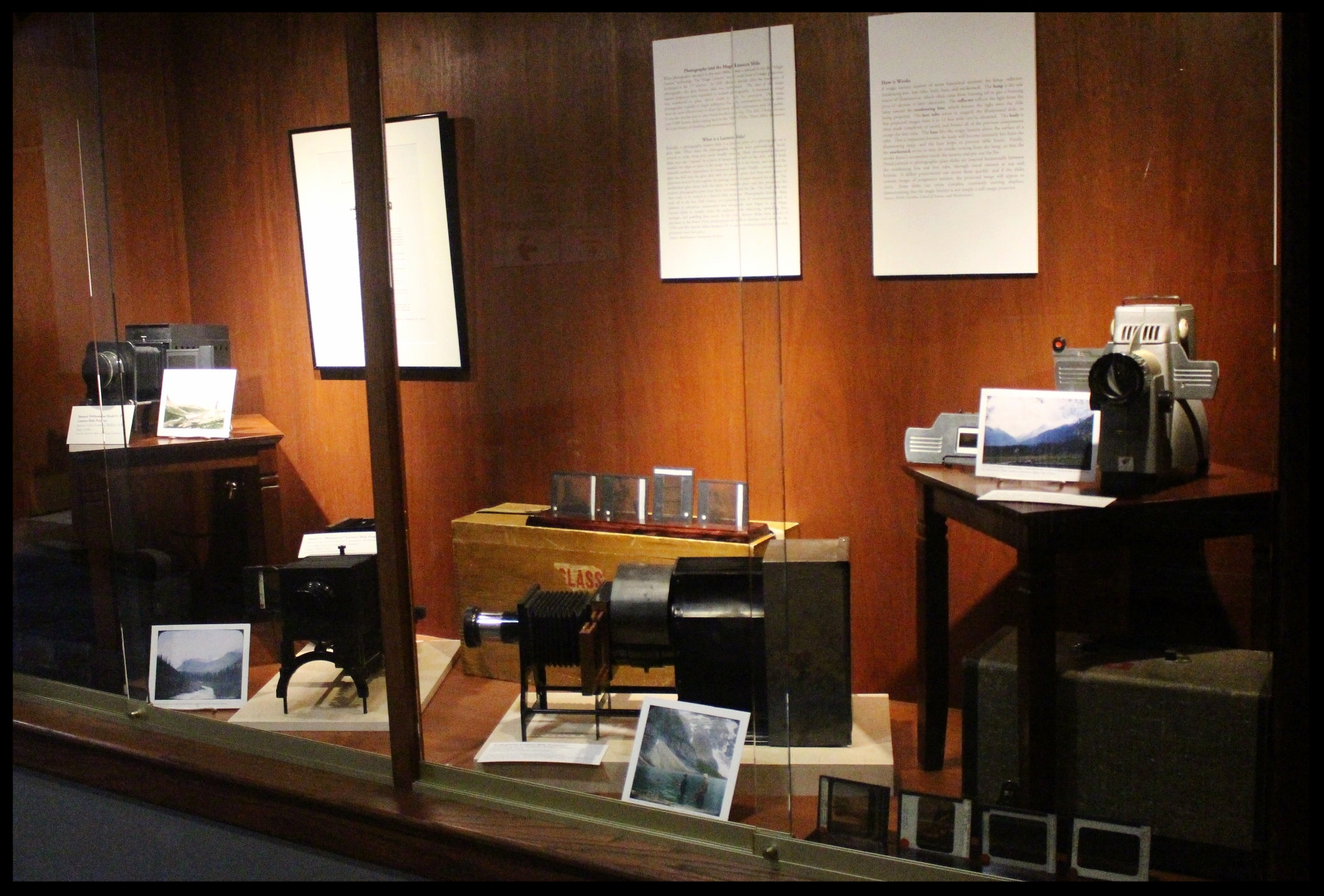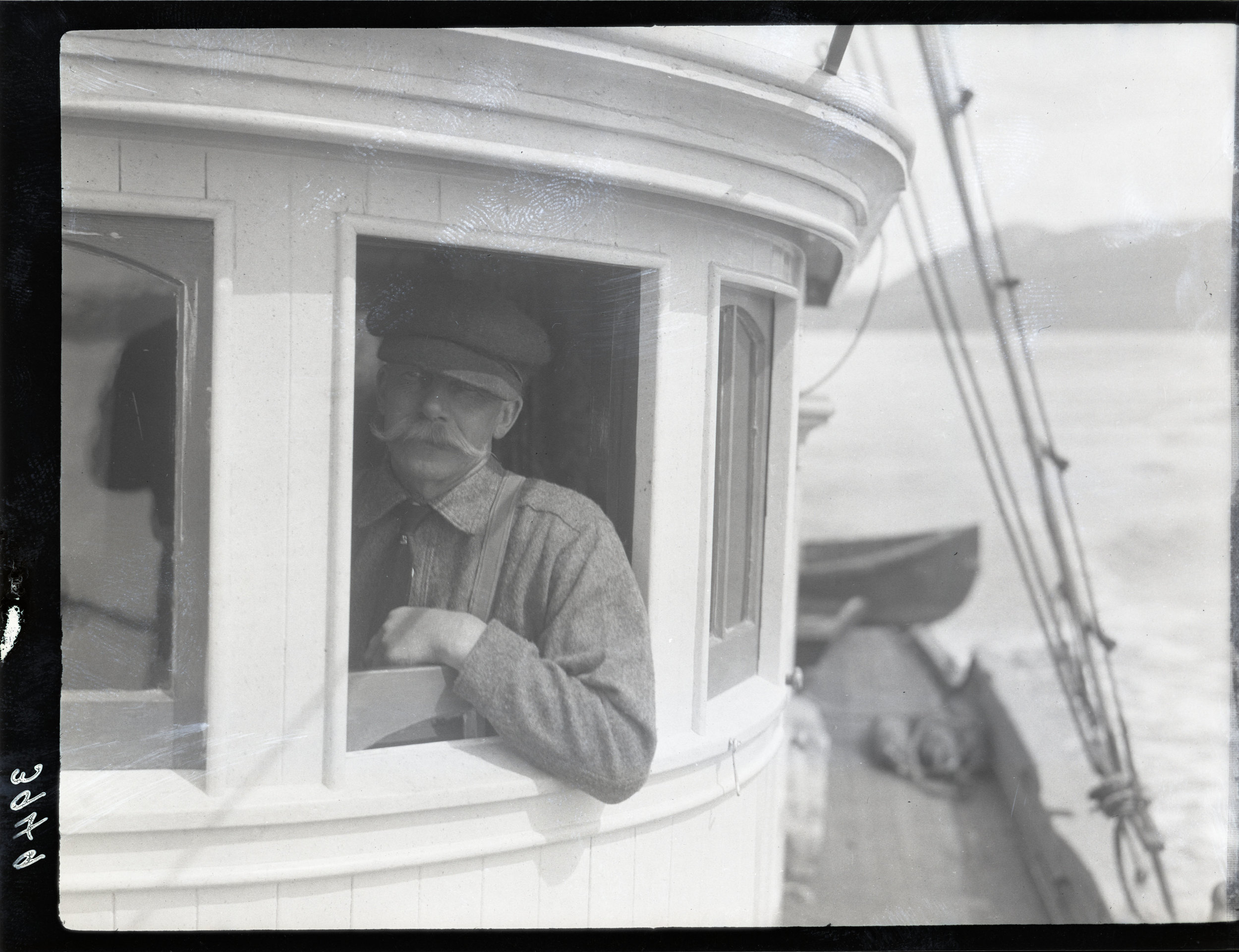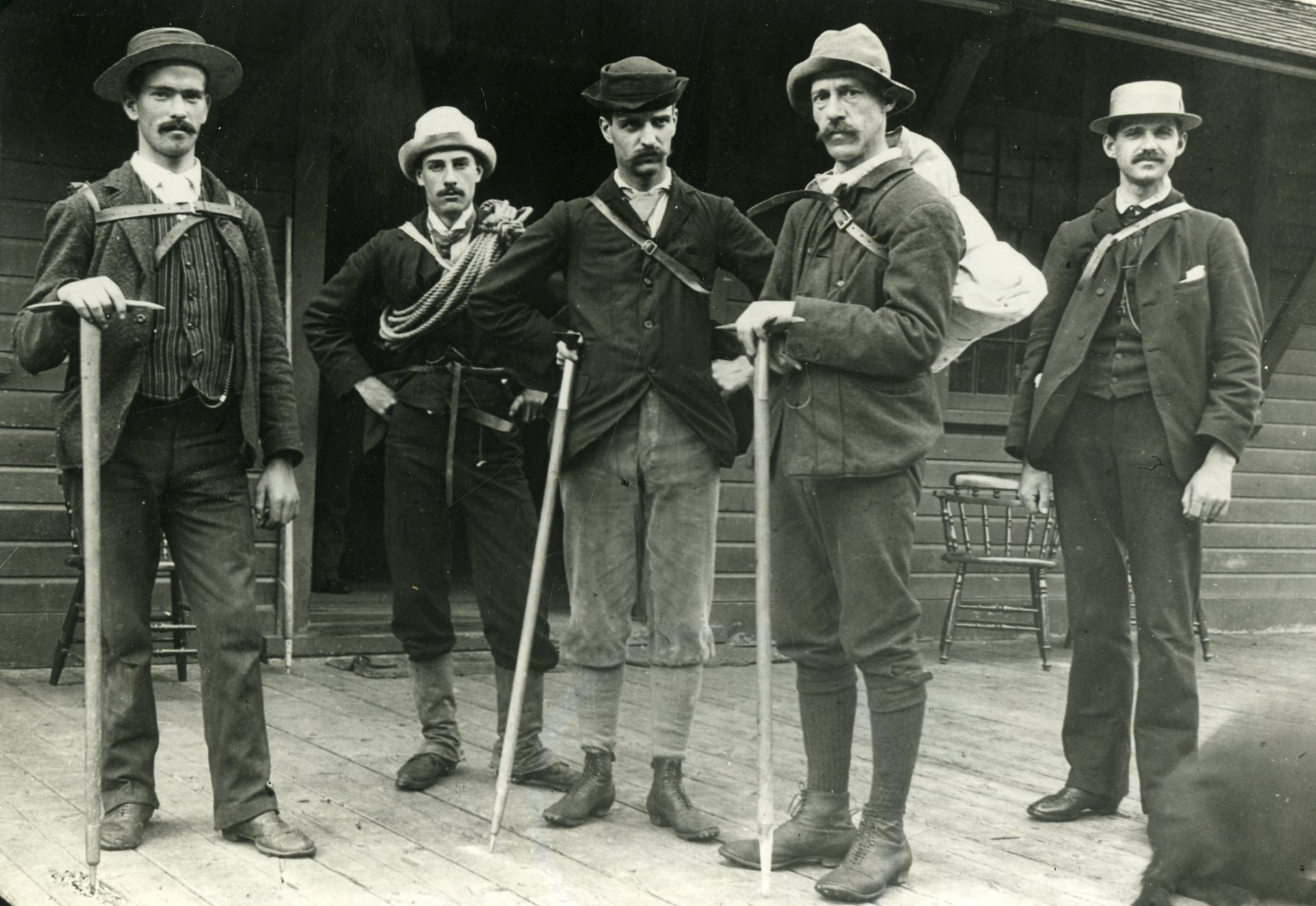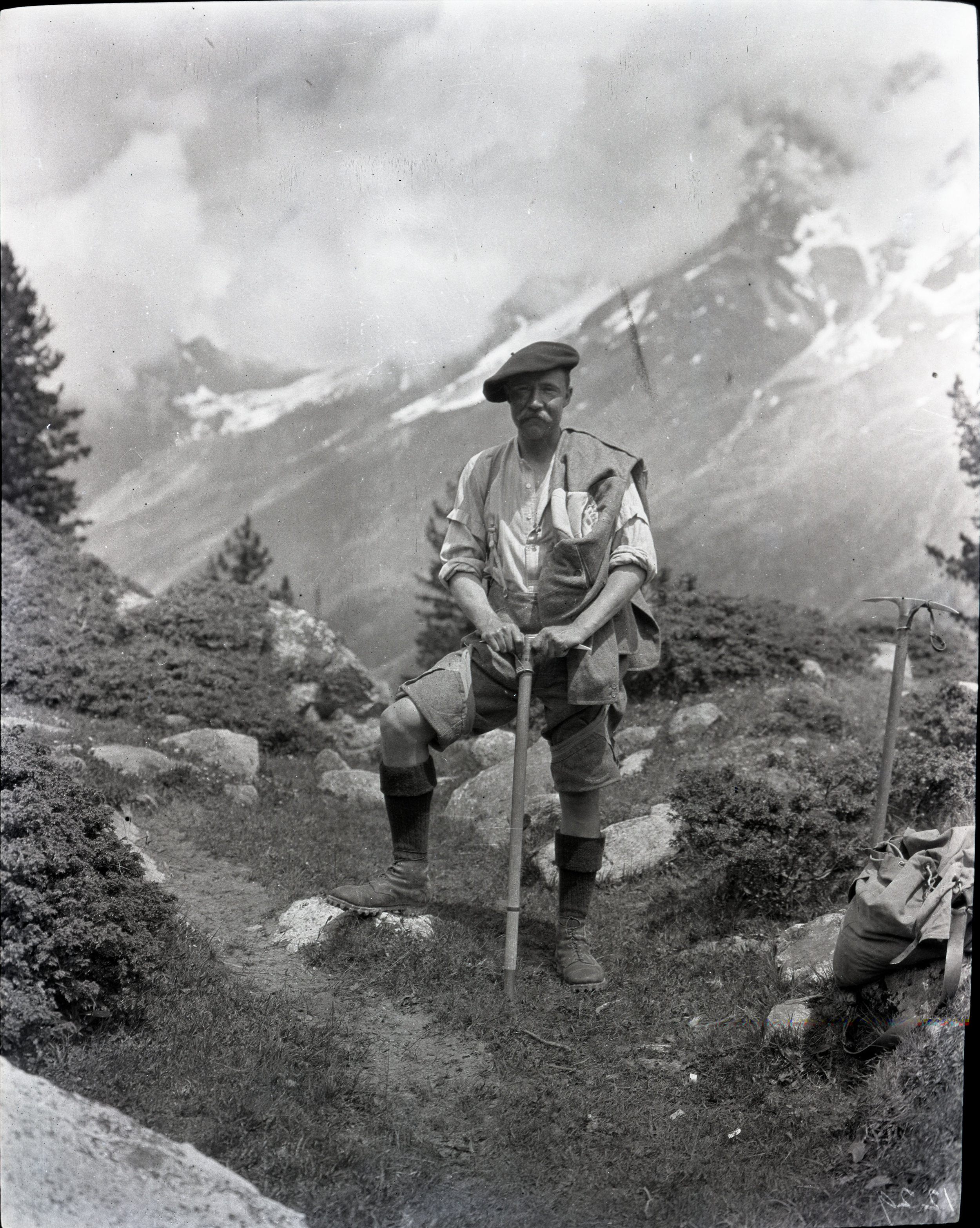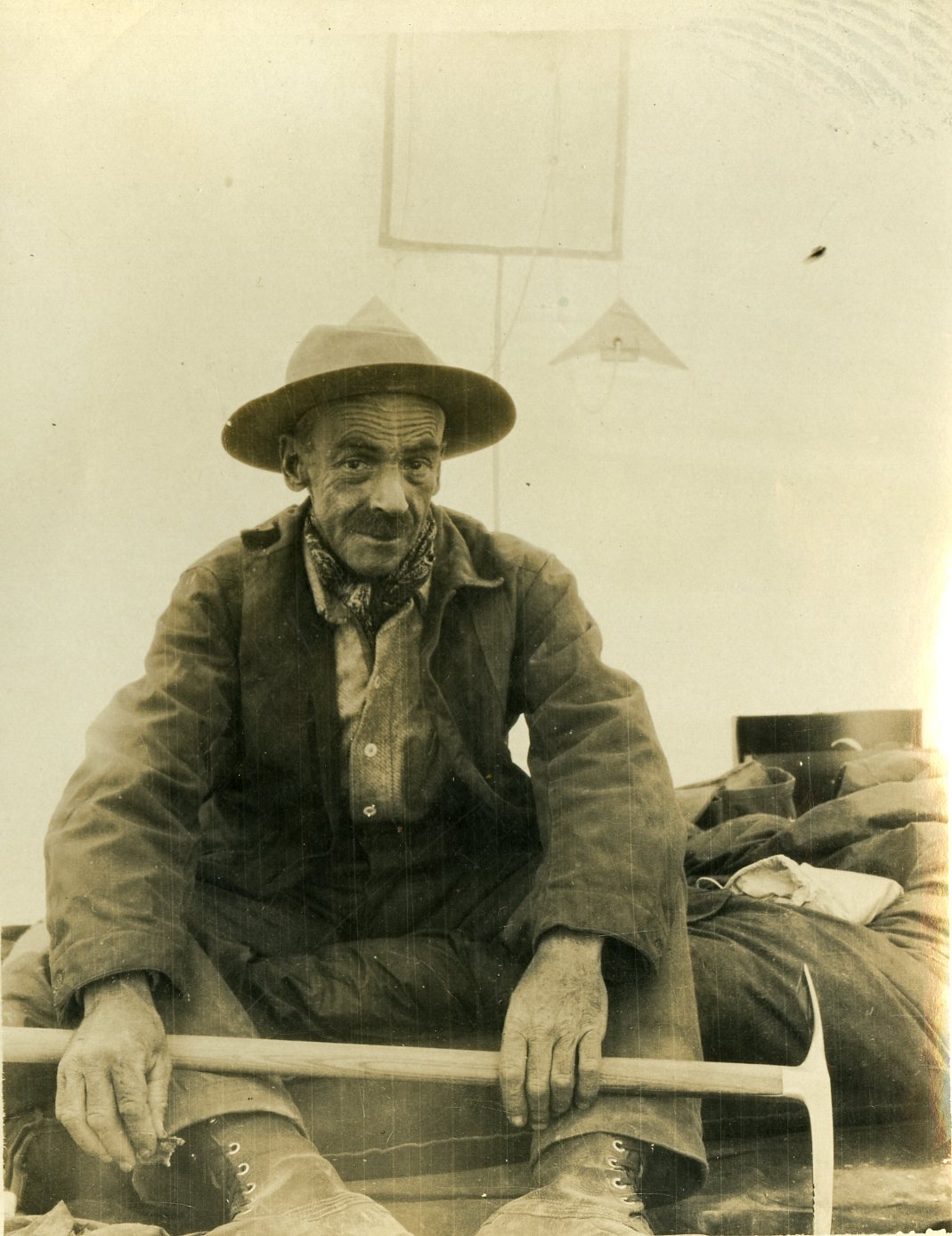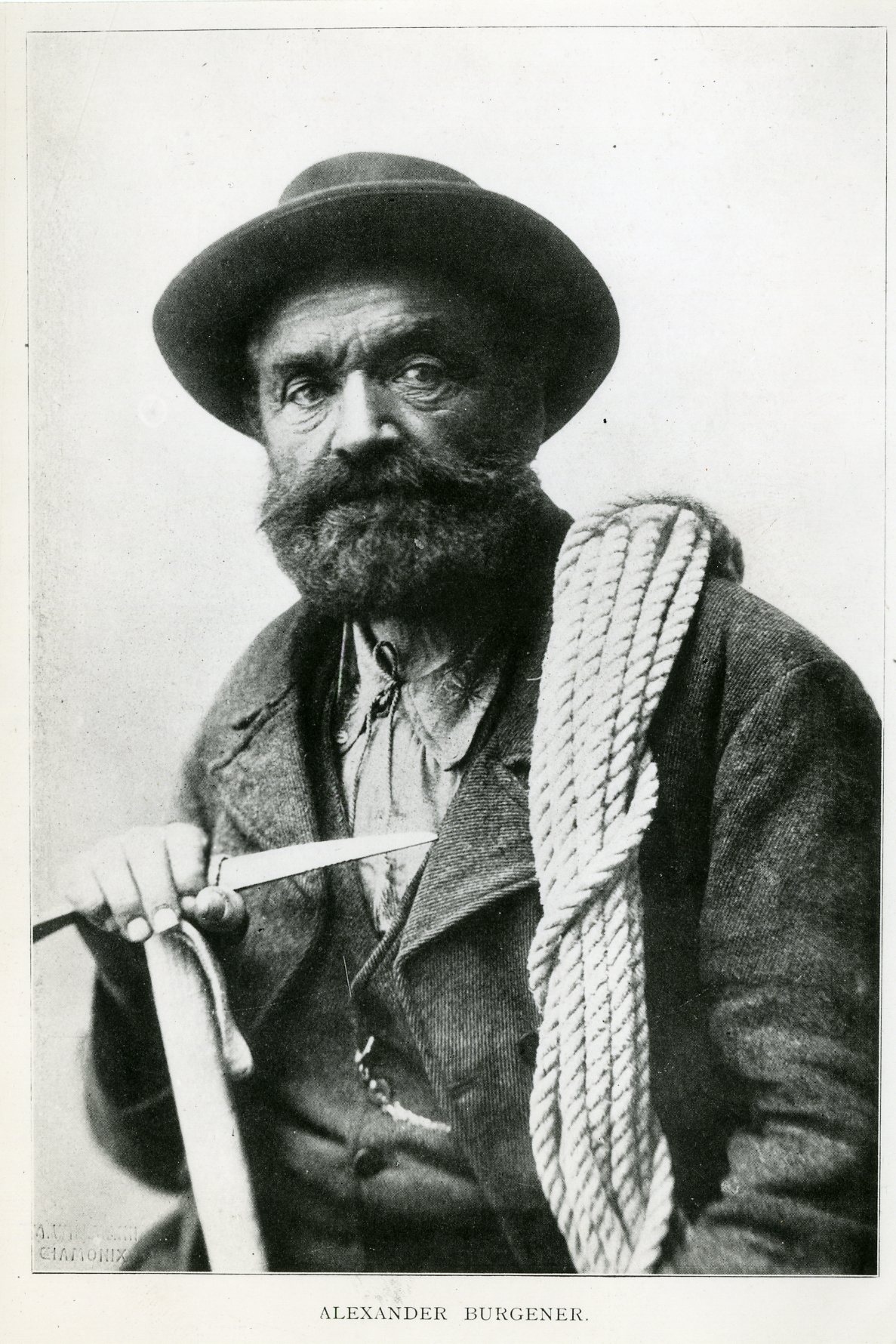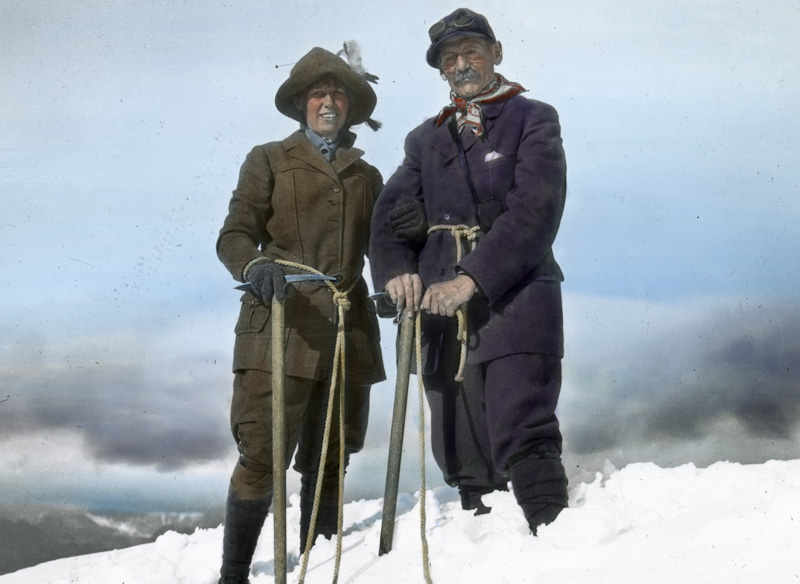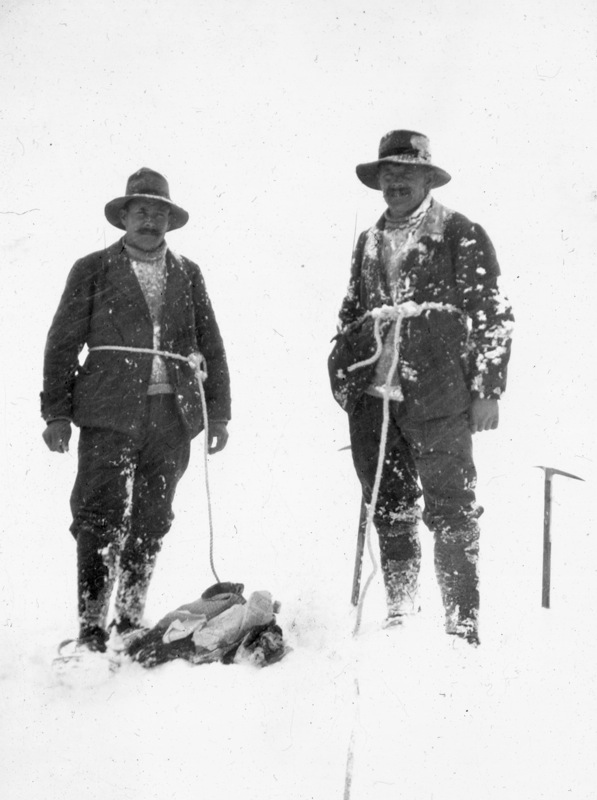A Lantern Slide Close-Up. Caption reads: Climbing Mt. Lyell, Yosemite Nat. Pk. (Photo by Farquar). This slide came from Francis P. Farquhar. It is probably from the 1910-20s.
The magic lantern was an early type of image projection, used since the 17th century, to show painted or printed materials for entertainment. With the invention of the photograph, it was adapted in the 19th century to project photographic materials to the masses.
Mountaineers would often employ this method to illustrate lectures on their mountain pursuits. Many of the early American Alpine Club annual dinners included lectures and talks that were "illustrated by lantern views."
Excerpt from the 1911 By-Laws & Register Book: Notes from the Eighth Annual Meeting held in Boston, 1909
Lantern slide projectors are the apparatus used to display the images. We have three in the AAC Library. They are currently on exhibit (until February 2018) in the American Mountaineering Center.
On display at the American Mountaineering Center in Golden, Colorado (until Feb. 2018).
These projectors date from approximately 1900 to 1930s. A 1950s slide projector is also on display with a 35mm glass slide. The many glass lantern slides on display date from 1890-1950. Most are from the American Alpine Club Archives, with a few from the Colorado Mountain Club Archives. You can see mountain scenes, cabins, and instructional slides.
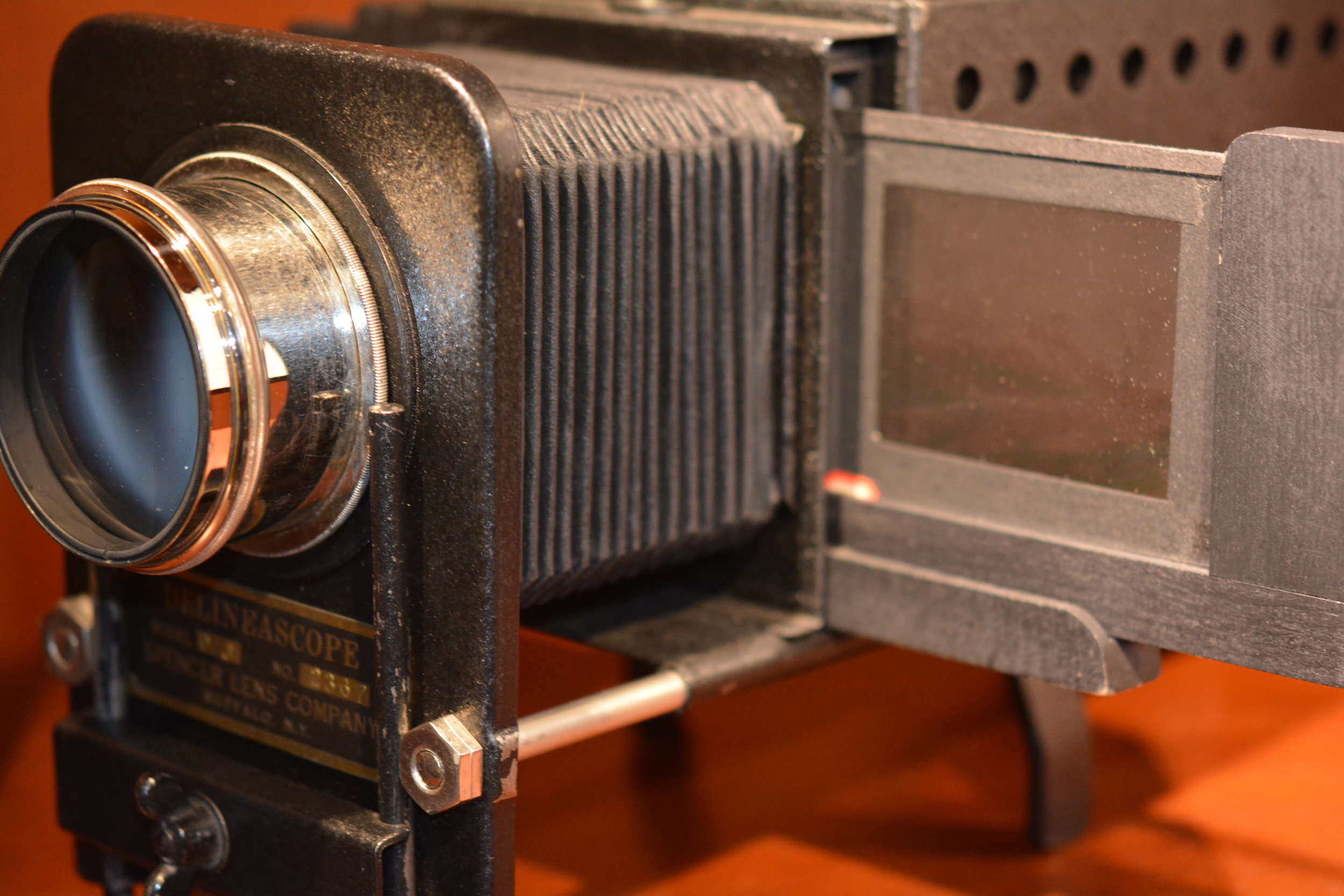
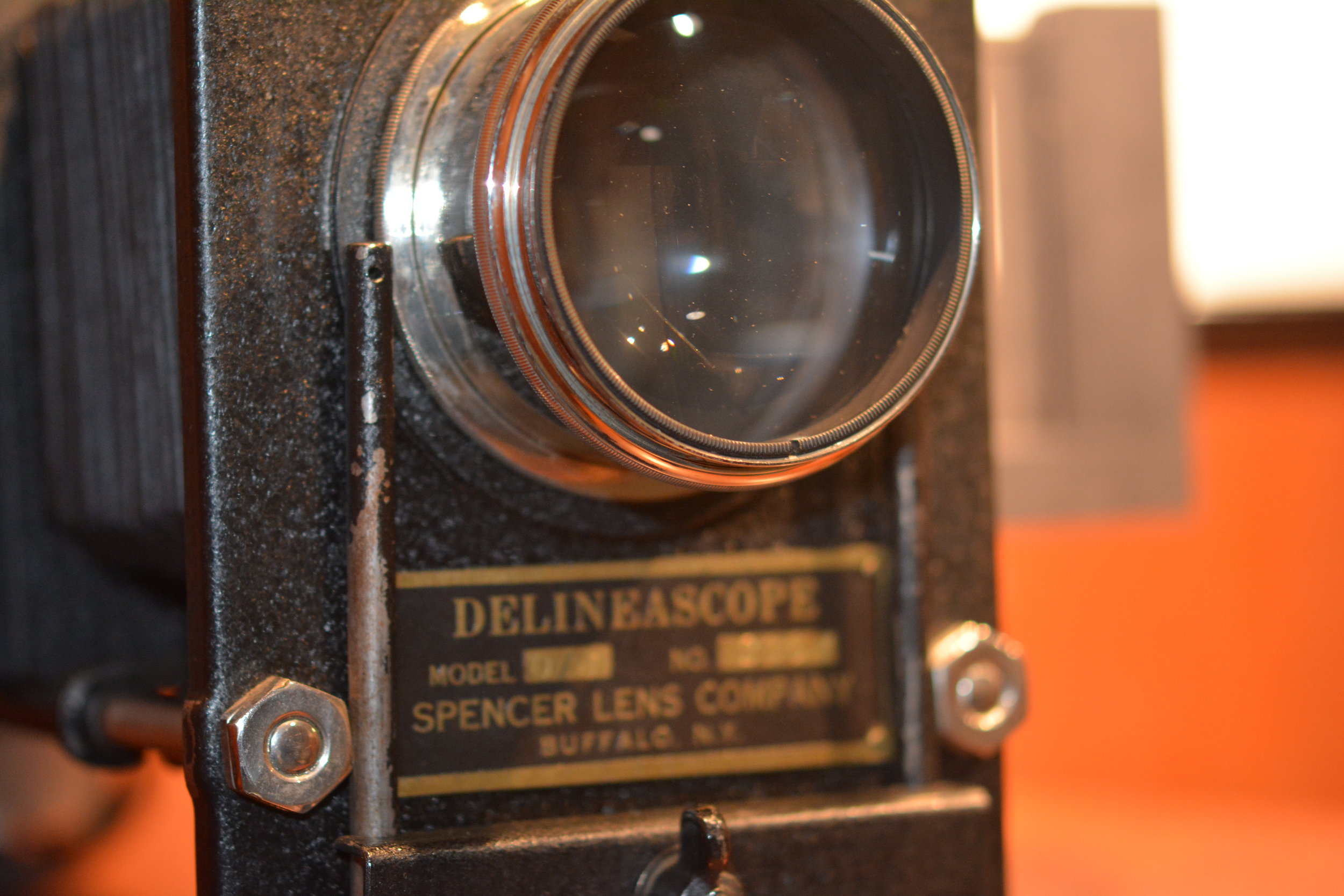
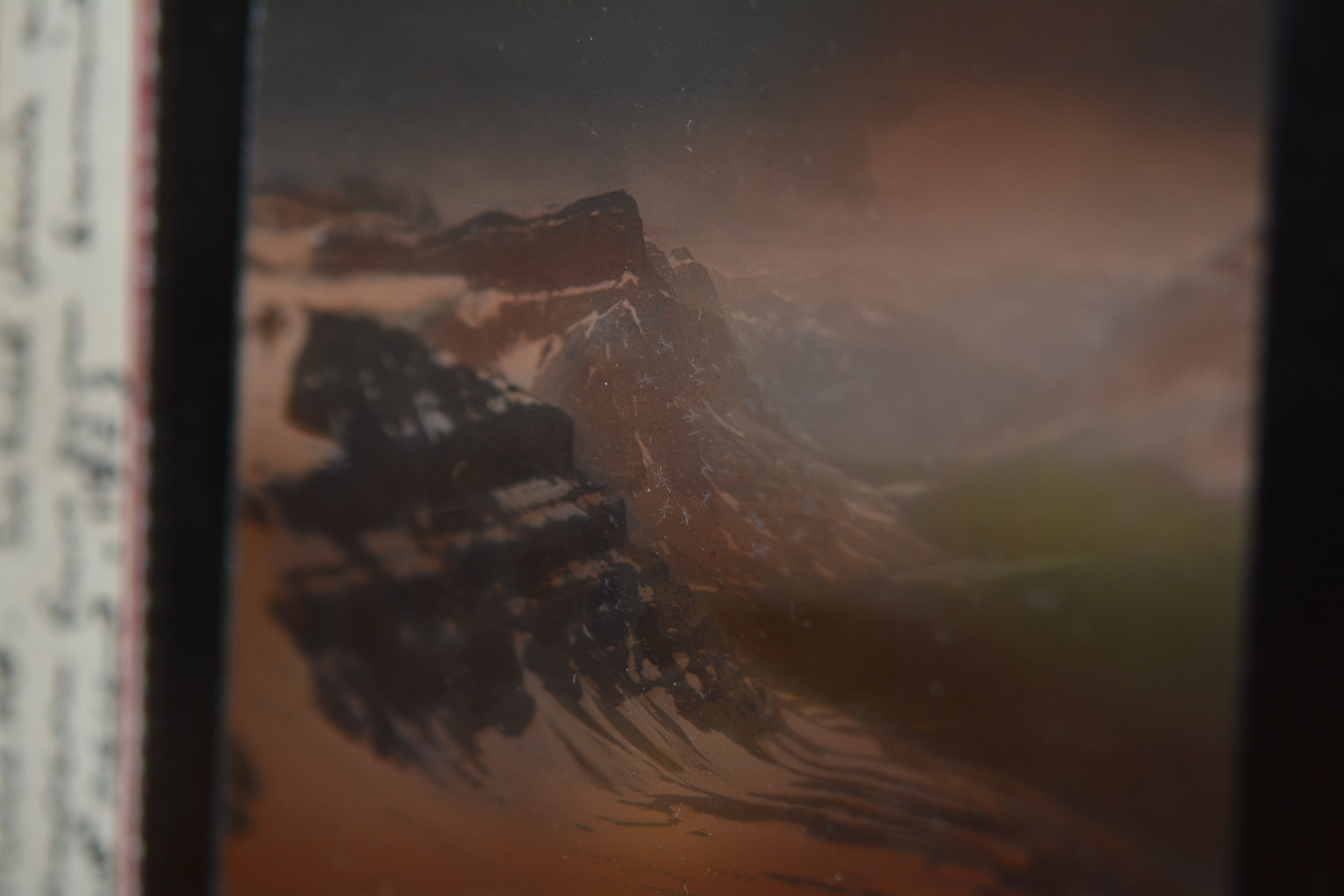
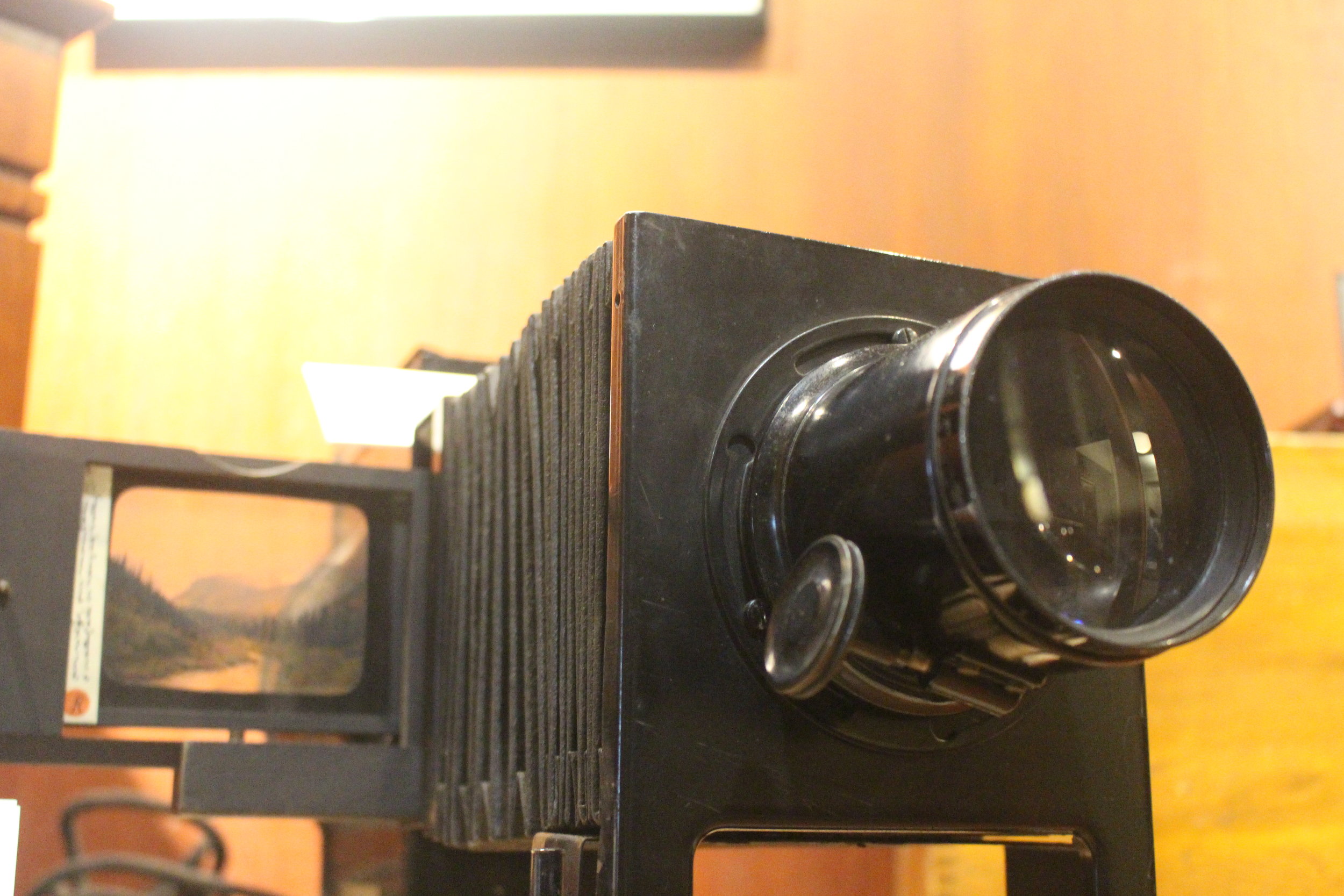
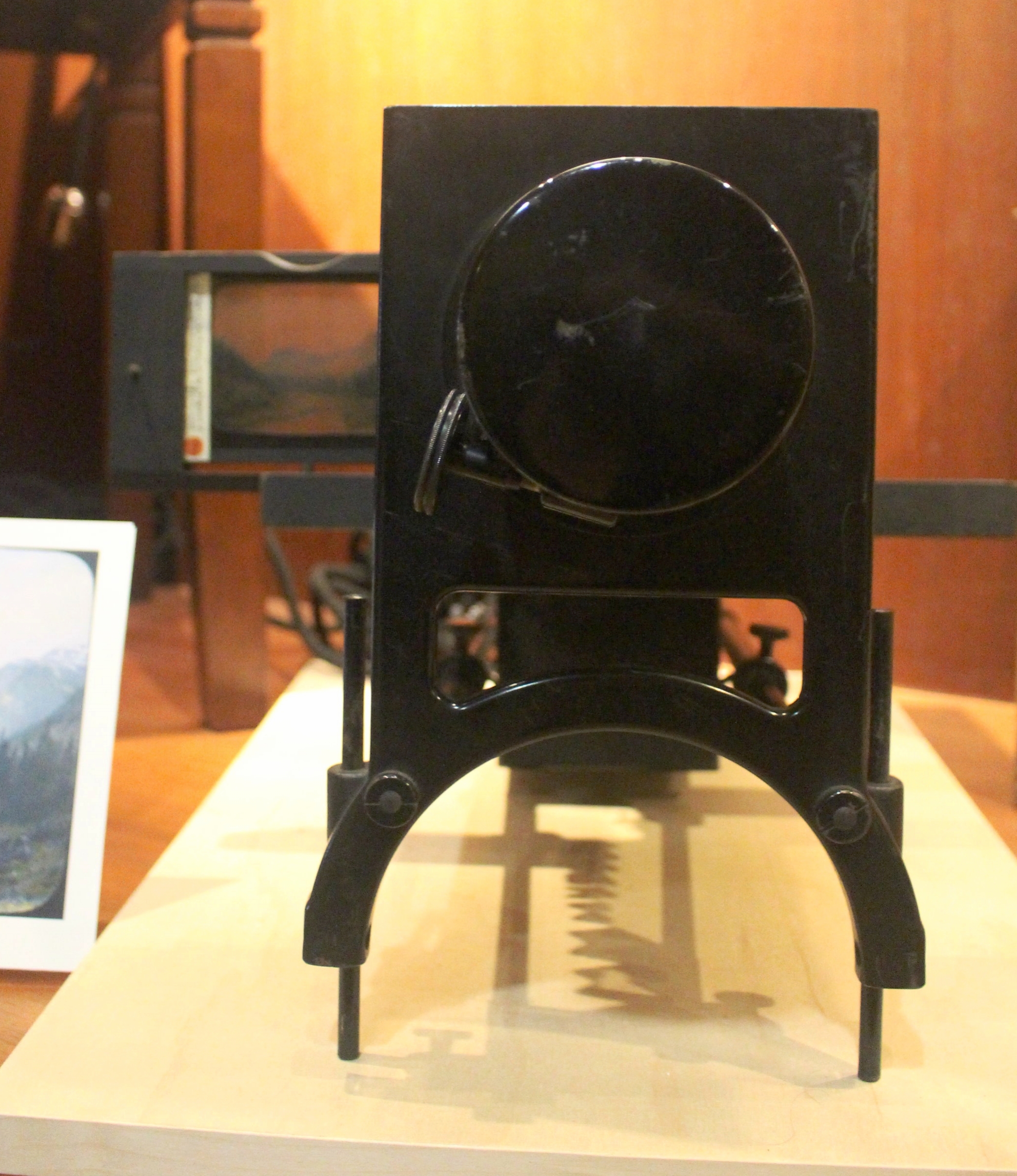

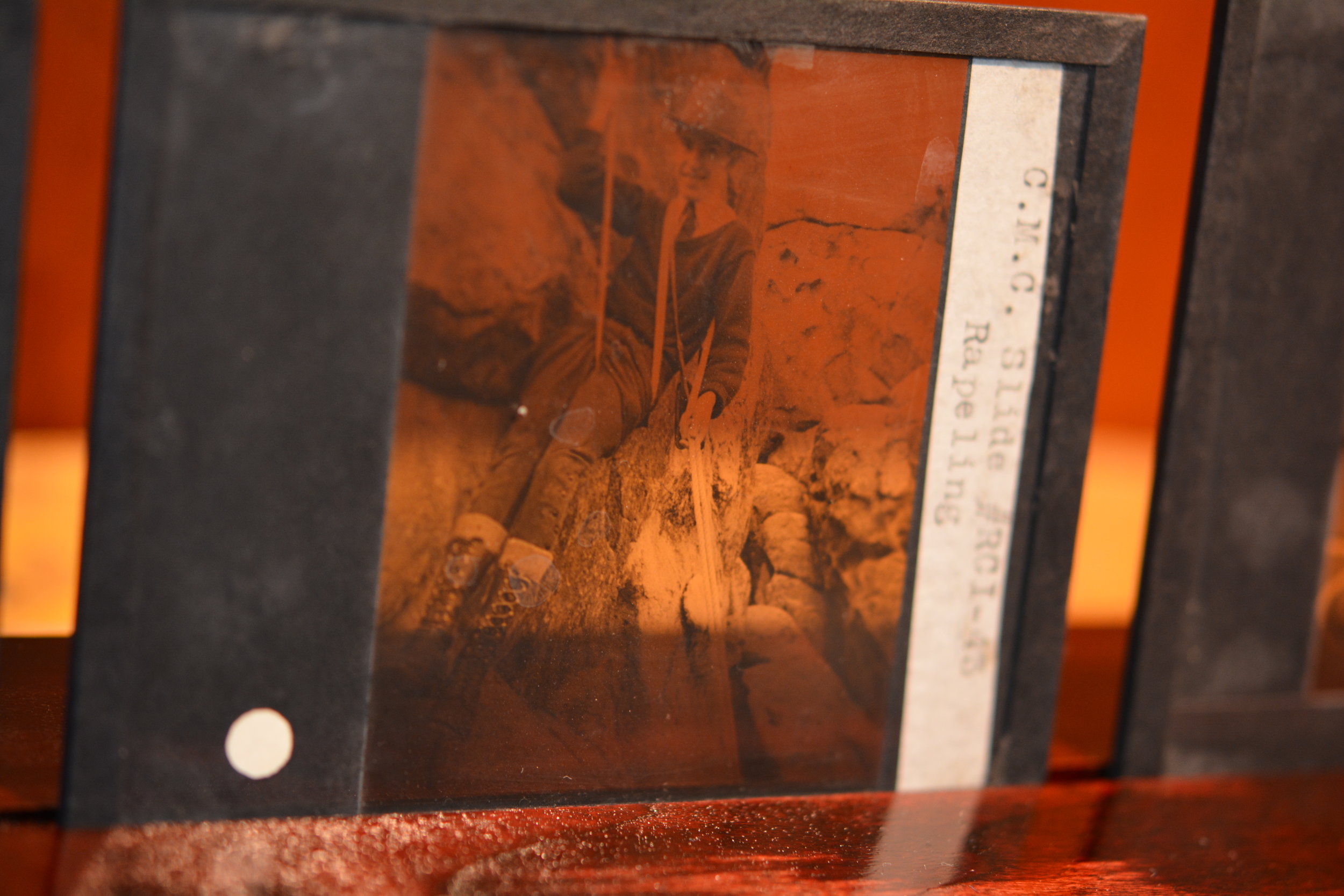
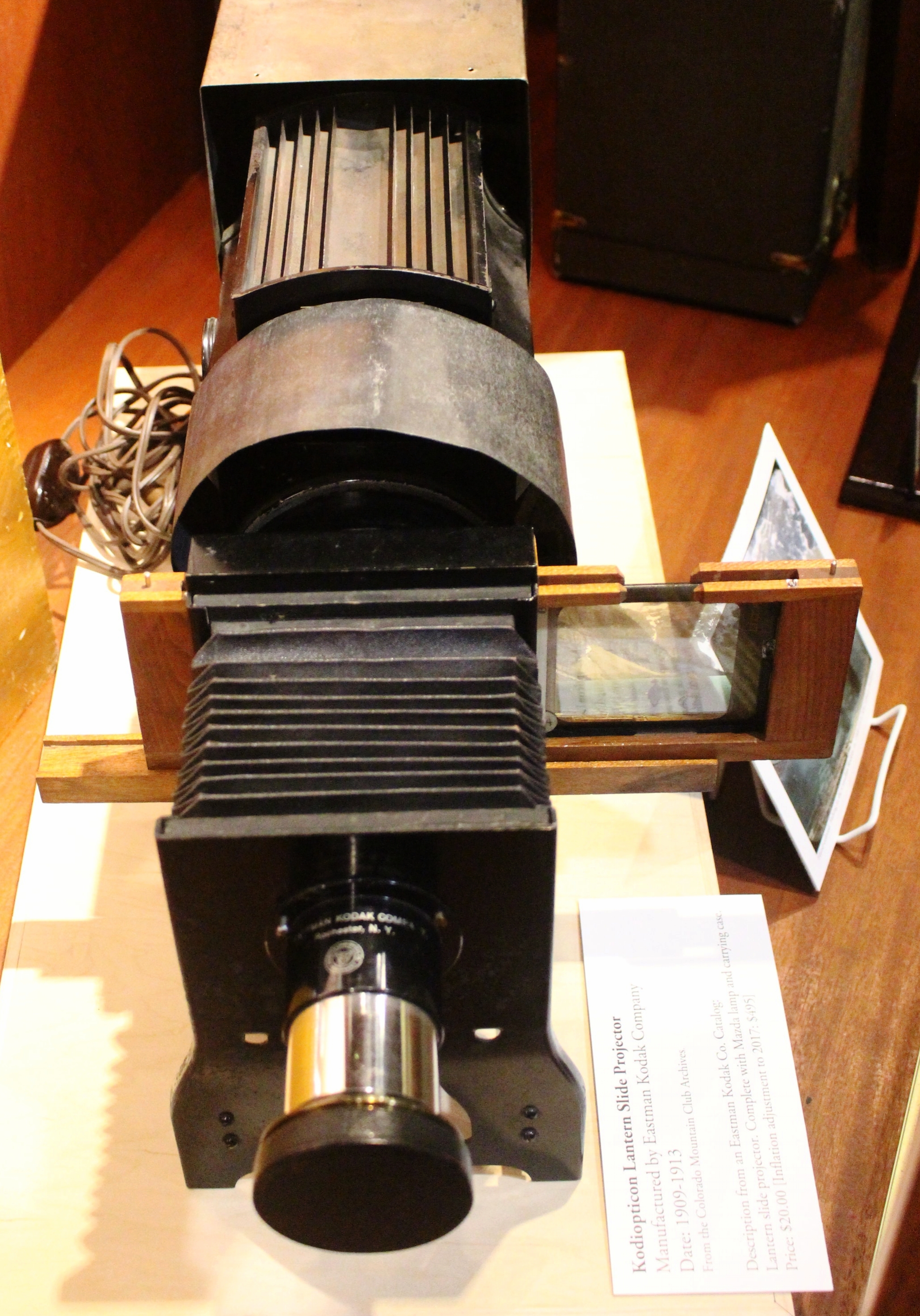
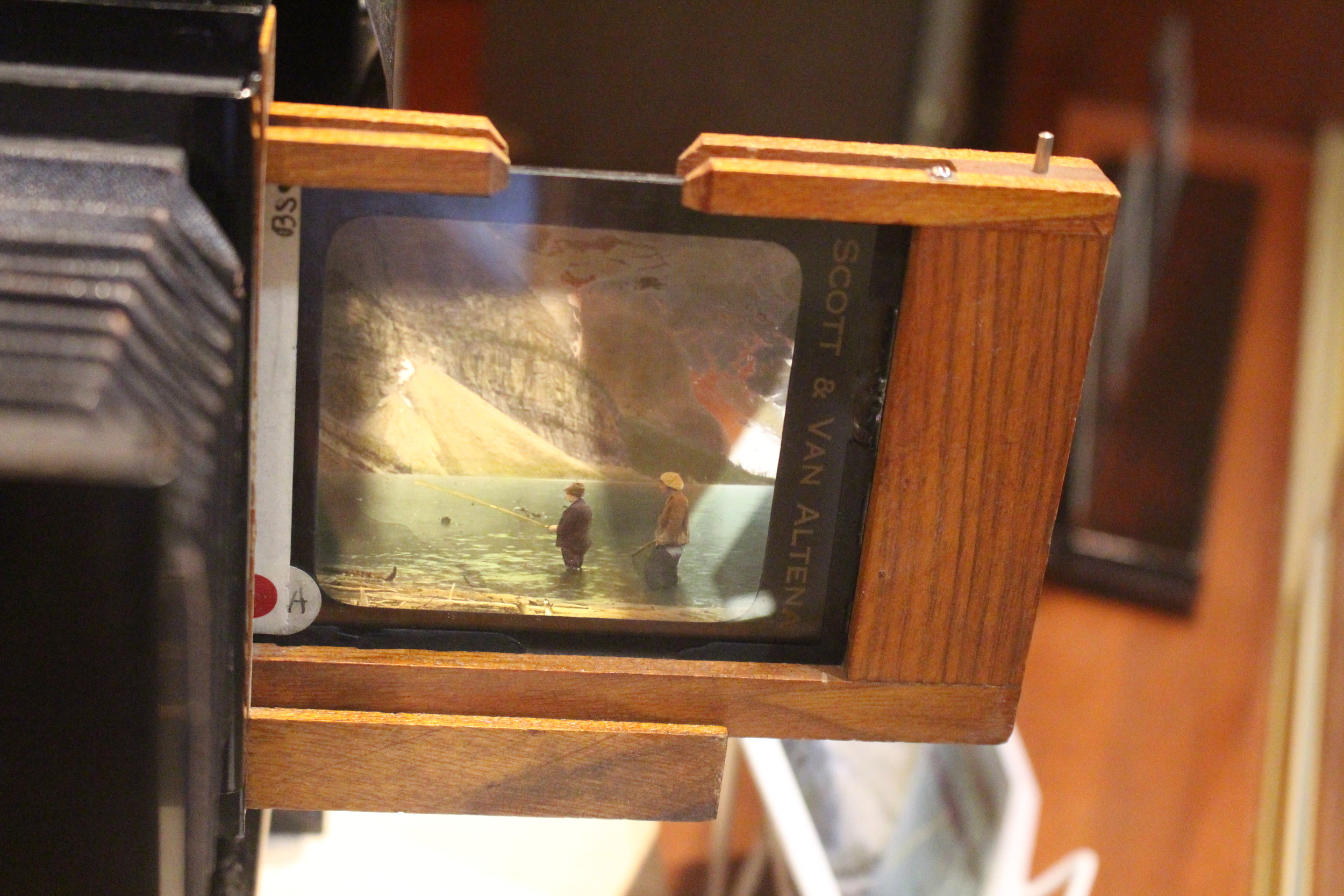
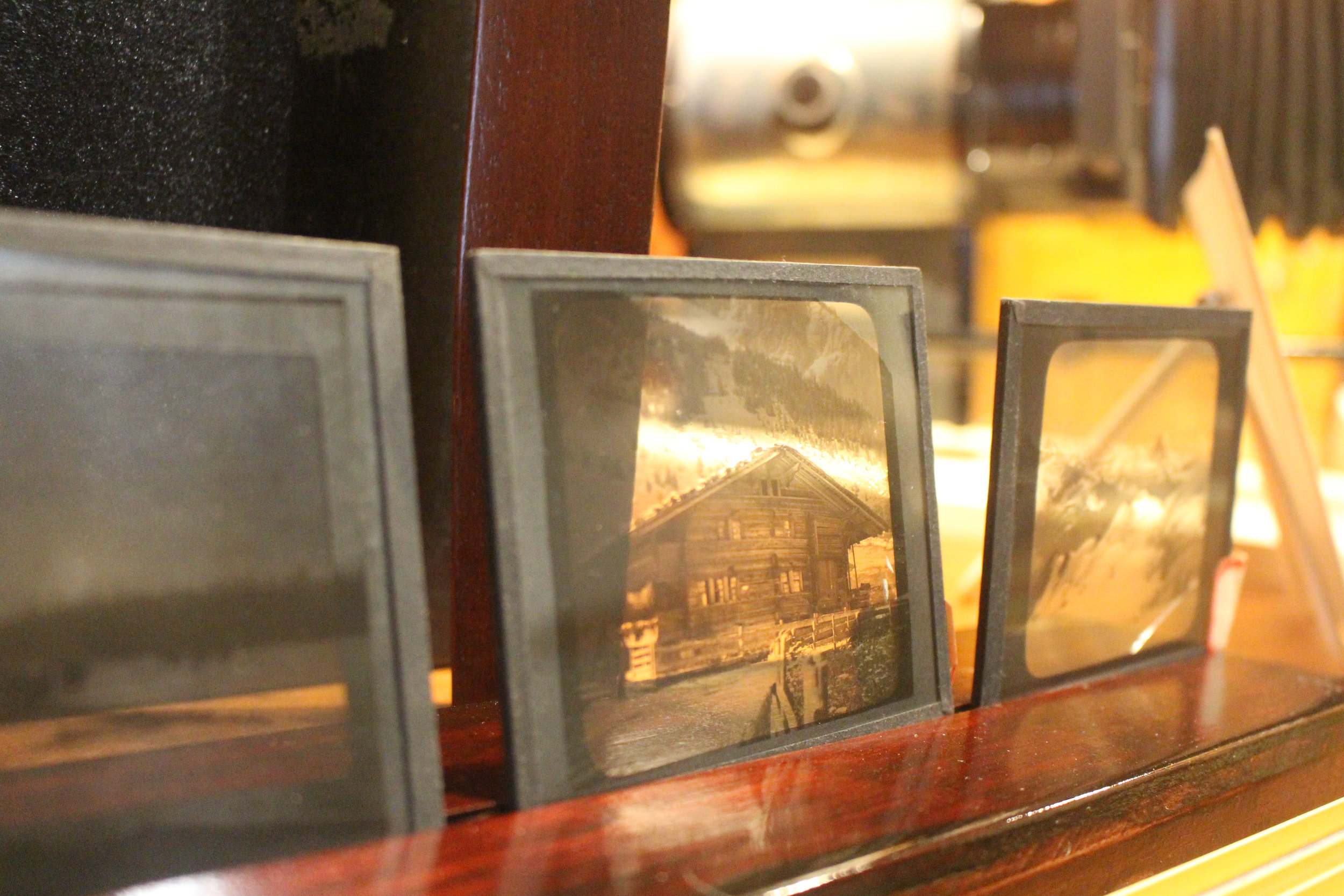
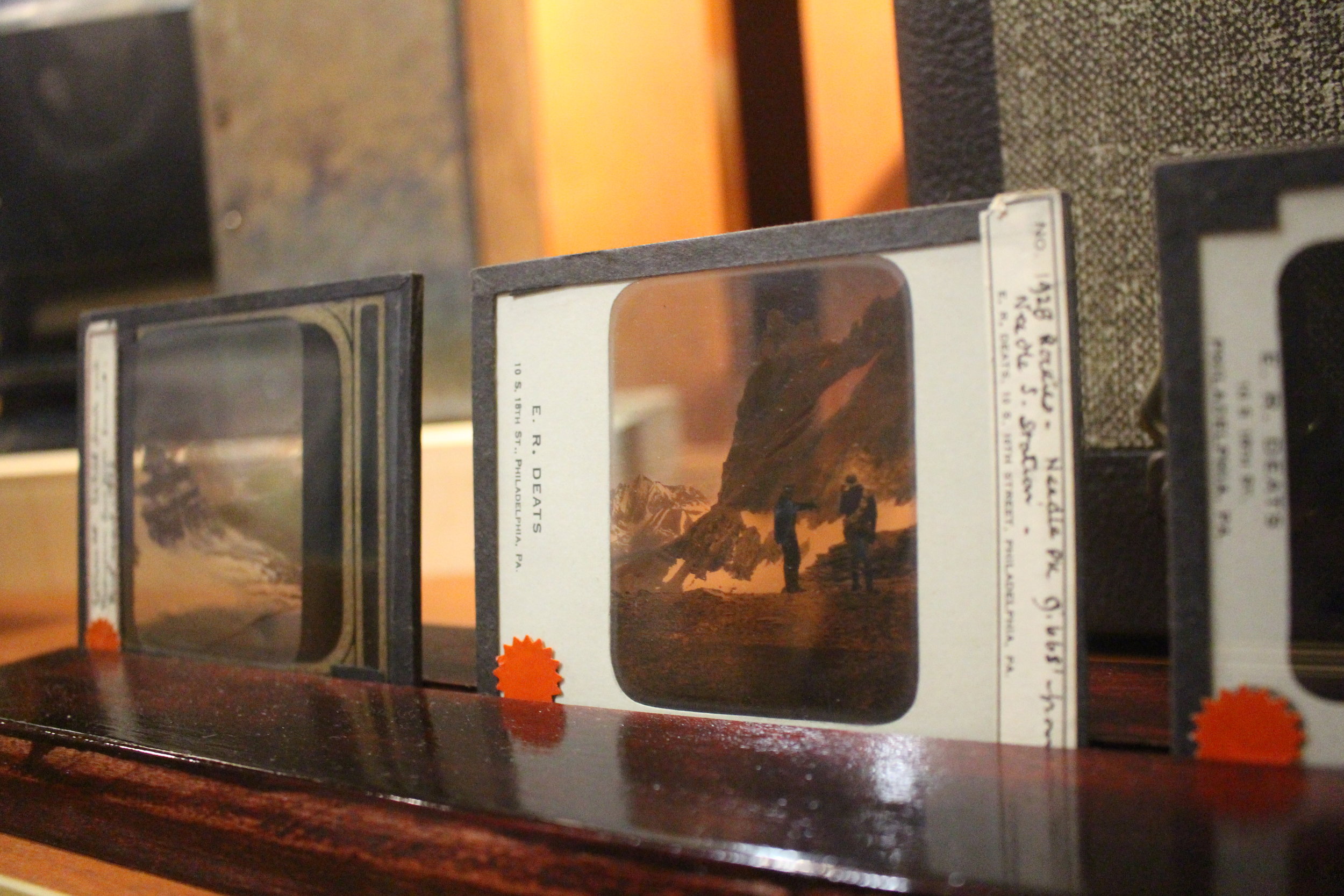
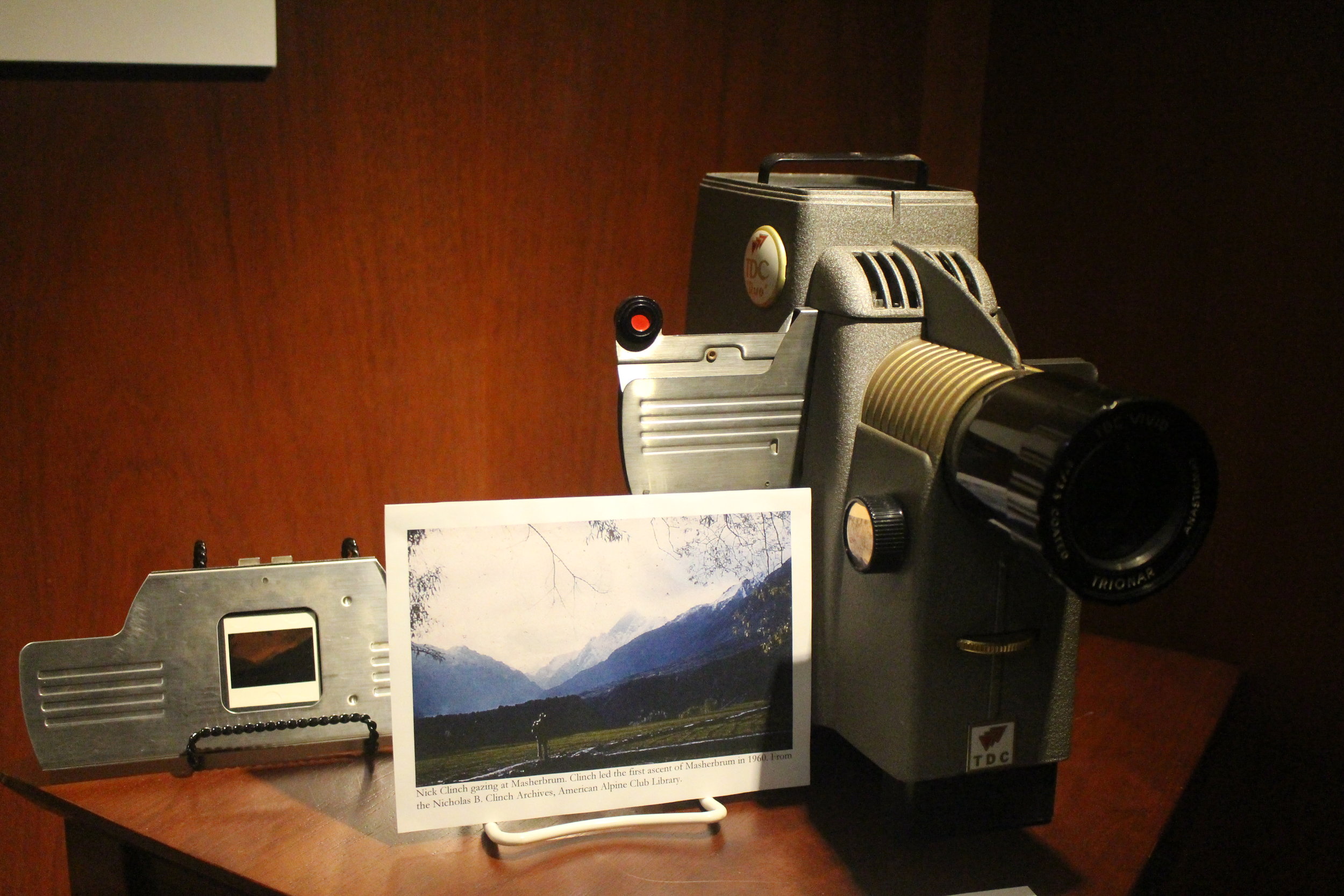
This is one of the projectors in our collection. This page is from a 1911 Bausch & Lomb catalog, which can be viewed in its entirety here on HathiTrust.



